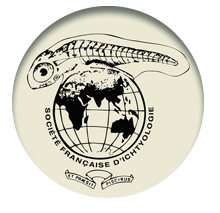Résumé
Five species of marine fishes are observed from La Réunion for the first time, and the occurrence of two species is confirmed, observed during a faunal inventory under the OBJECTIF 1000 program. Marine fishes were observed and collected off La Réunion Island (France) with bottom longlines and traps in the upper bathyal zone at 1,000 m depth during a faunal inventory under the OBJECTIF 1000 program. Five species represent first records for the island: Etmopterus granulosus (Günther 1880) (Etmopteridae), Nemichthys scolopaceus Richardson 1848 (Nemichthyidae), Eustomias trewavasae Norman 1930 (Stomiidae), Coelorinchus trunovi Iwamoto & Anderson 1994 (Macrouridae), and Lepidion natalensis Gilchrist 1922 (Moridae). Two species represent confirmed records for the island: Hexanchus griseus (Bonnaterre 1788) (Hexanchidae), Centroscymnus owstonii Garman 1906 (Somniosidae). New depth records are provided for Coelorinchus trunovi Iwamoto & Anderson 1994 and Lepidion natalensis Gilchrist 1922 (1,000 m depth). More thorough sampling efforts would probably result in additional species never before observed in La Réunion.

